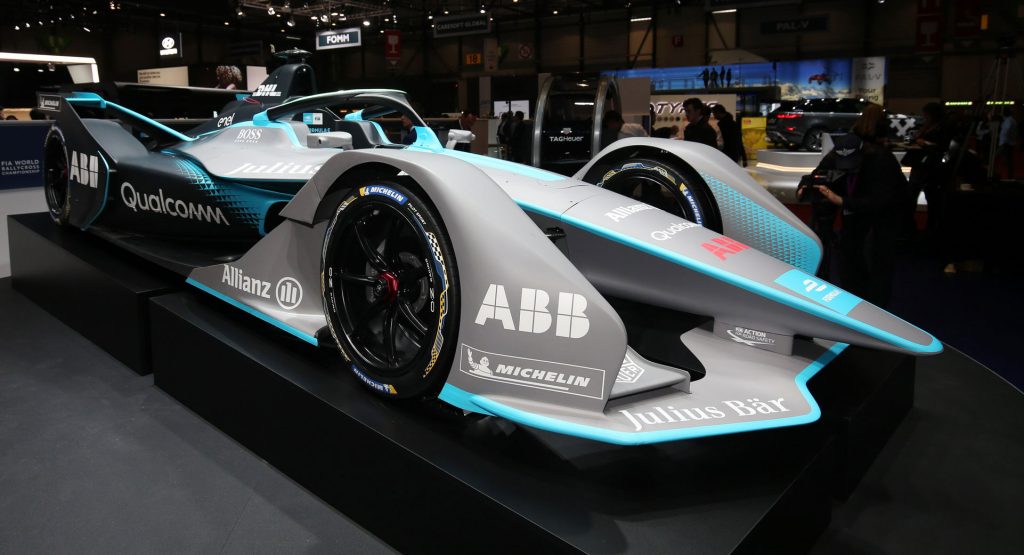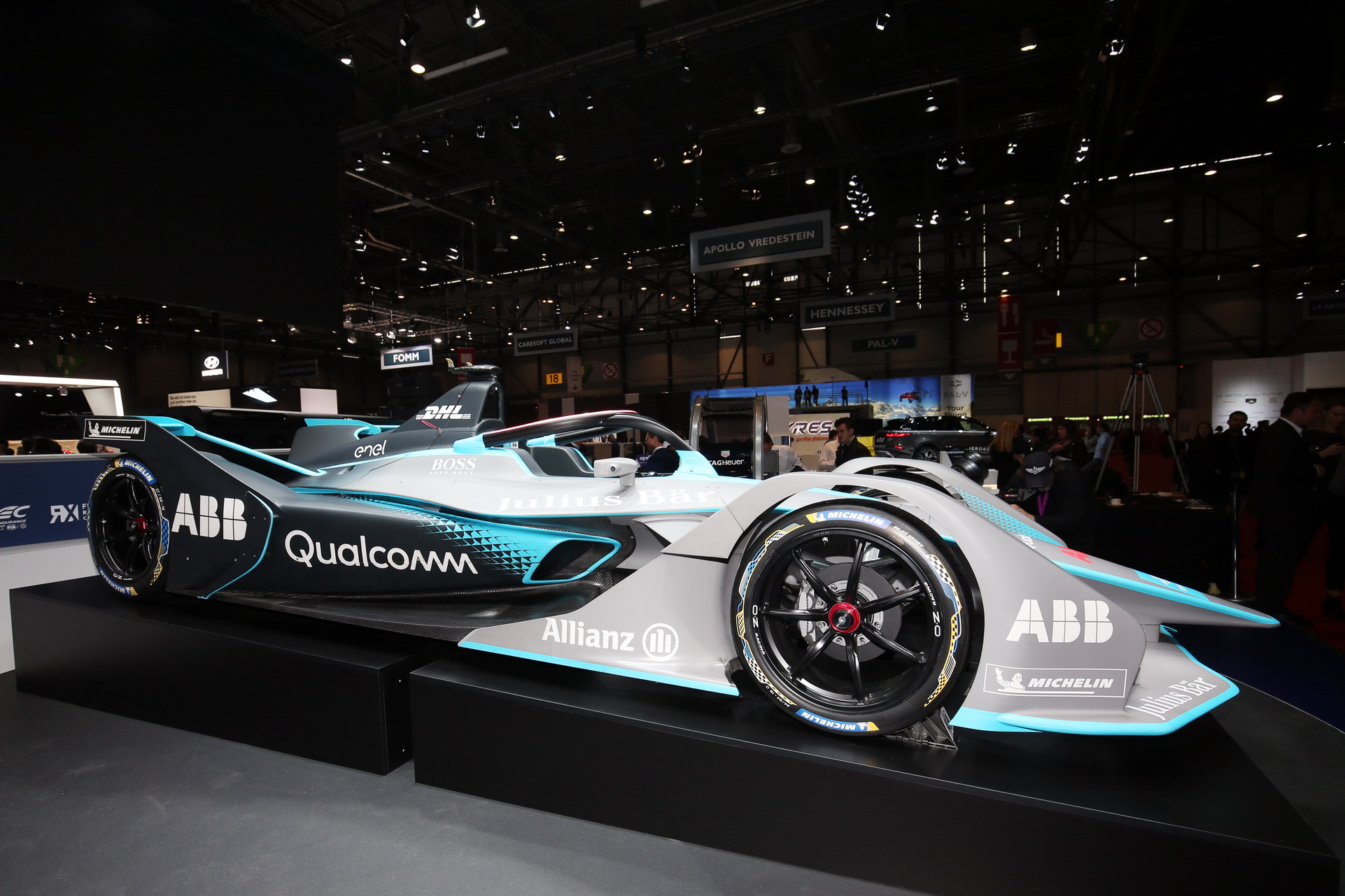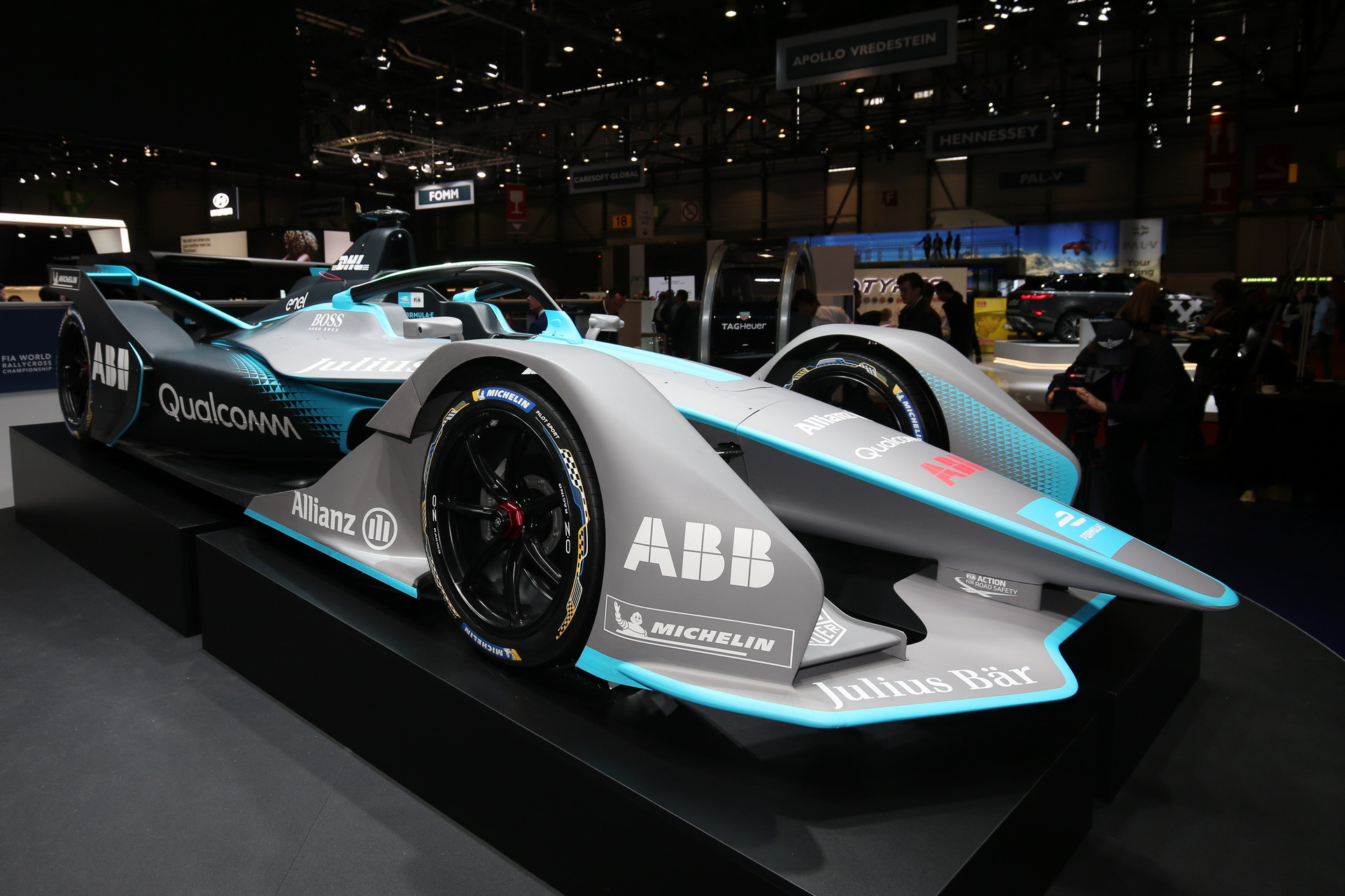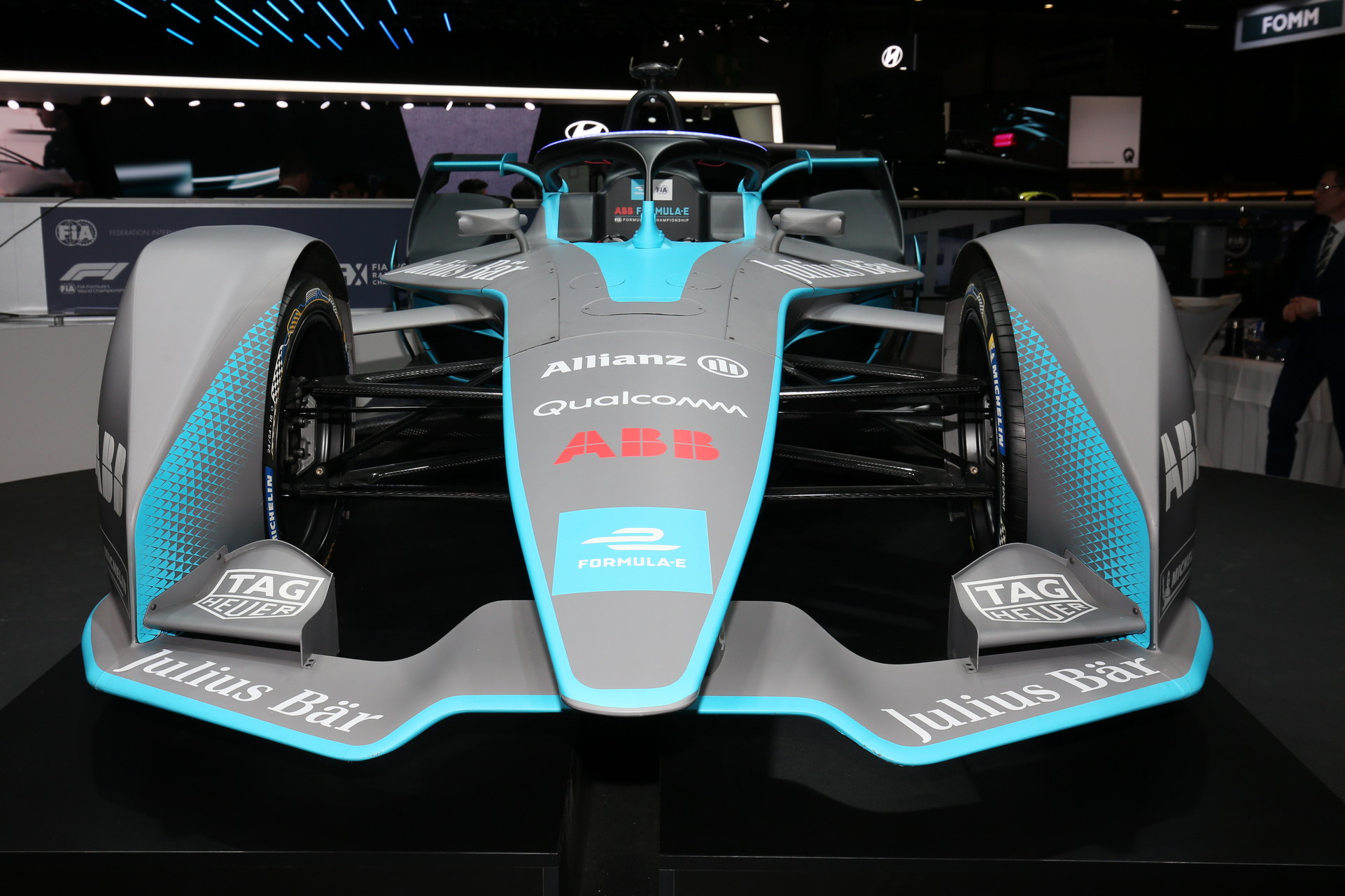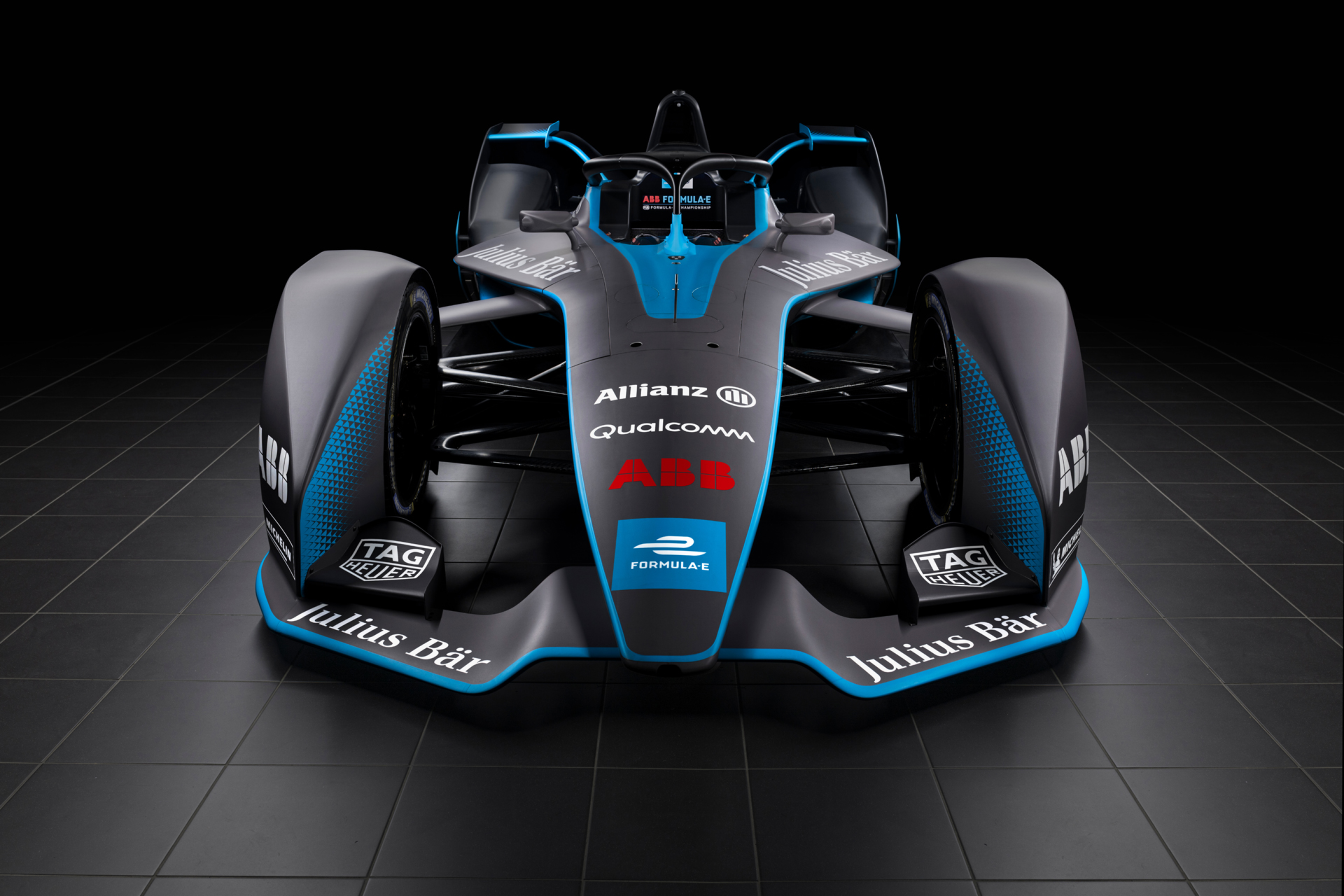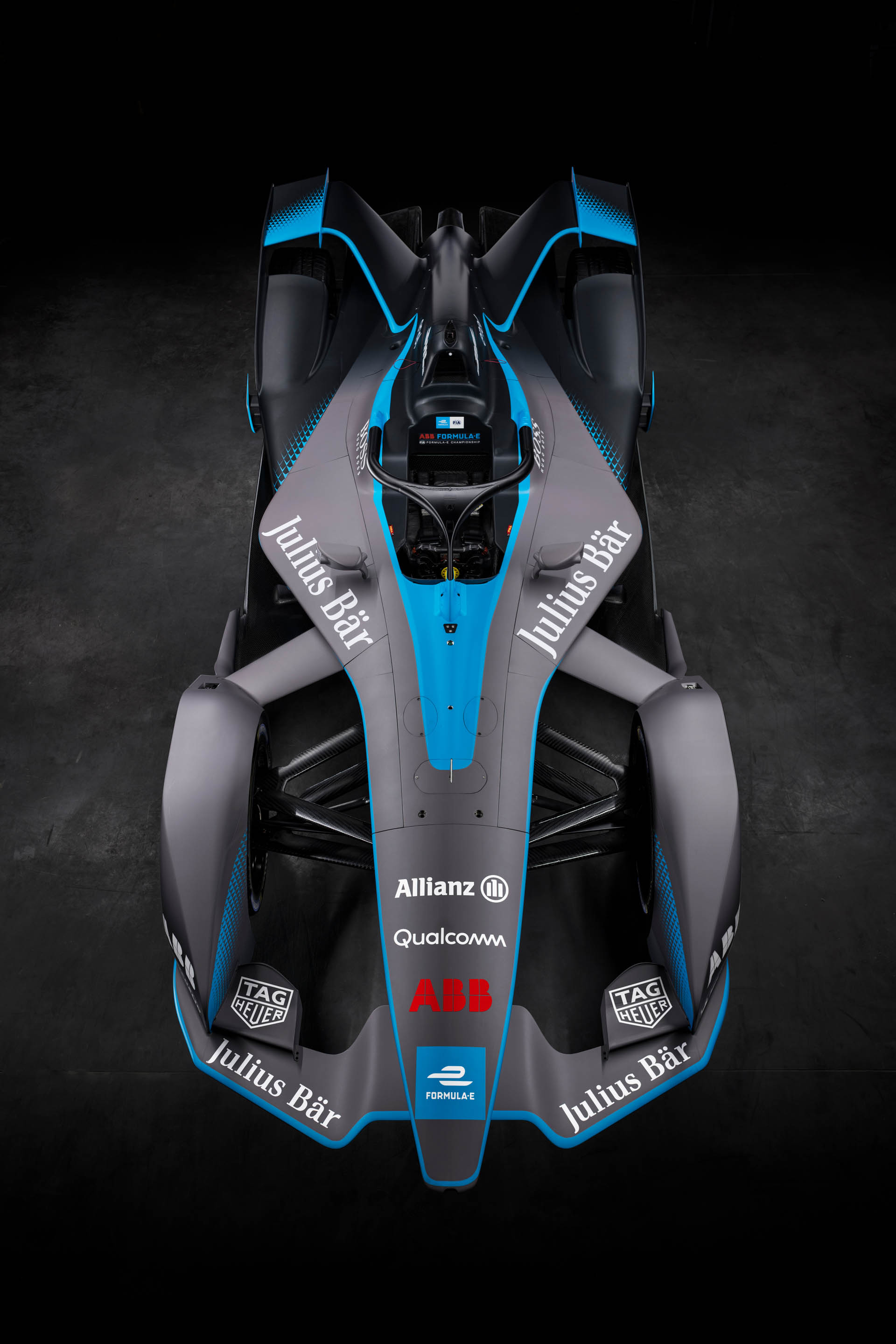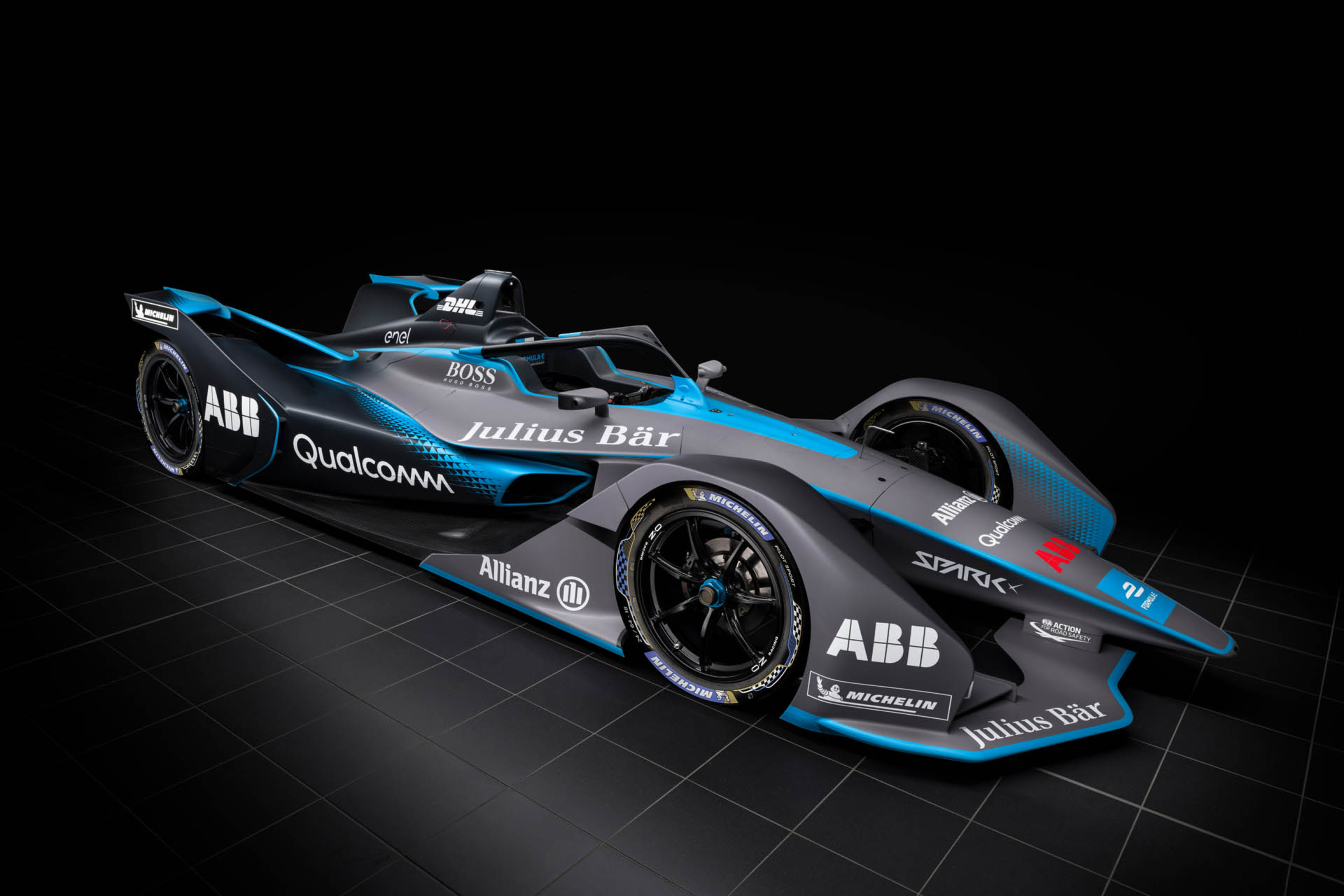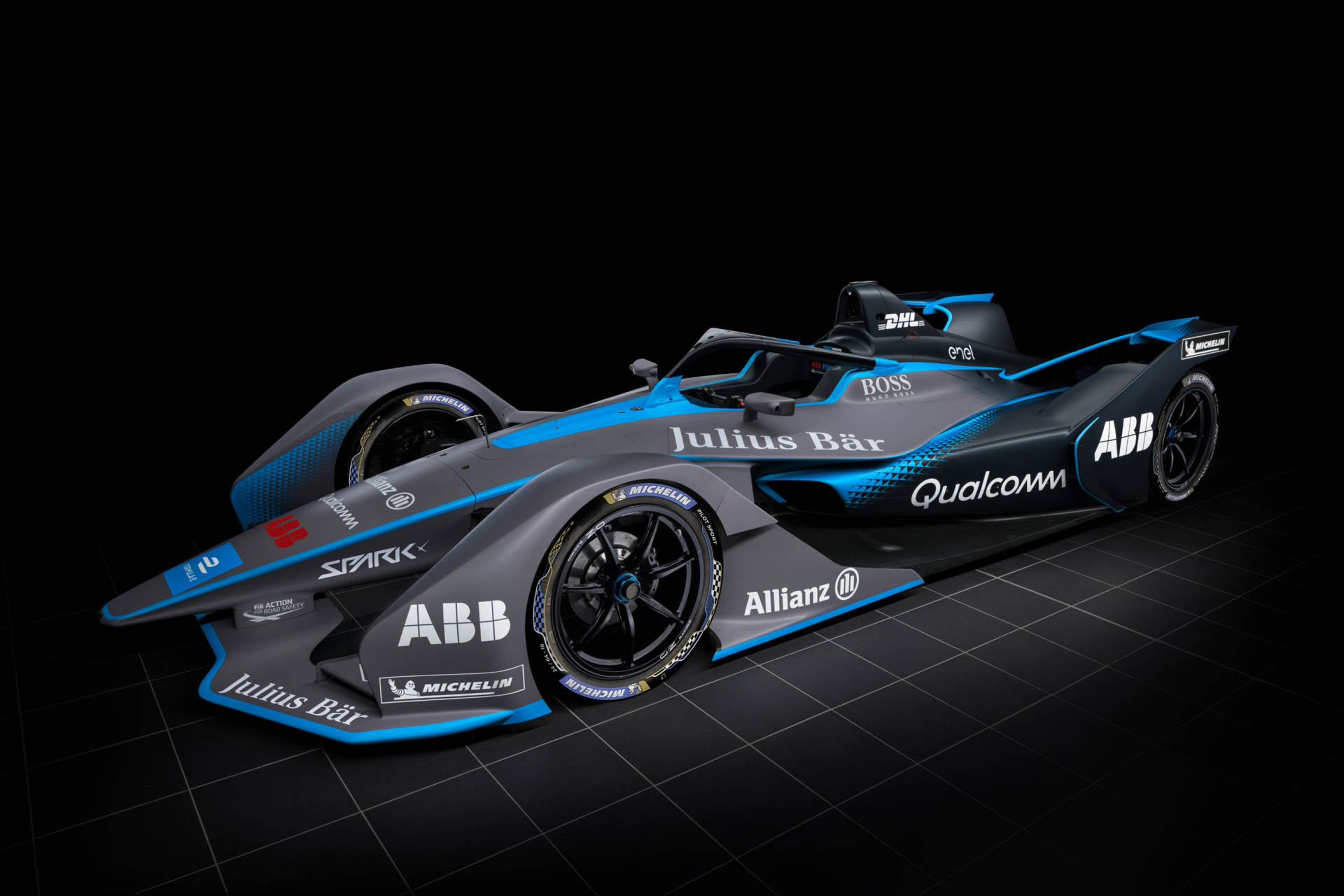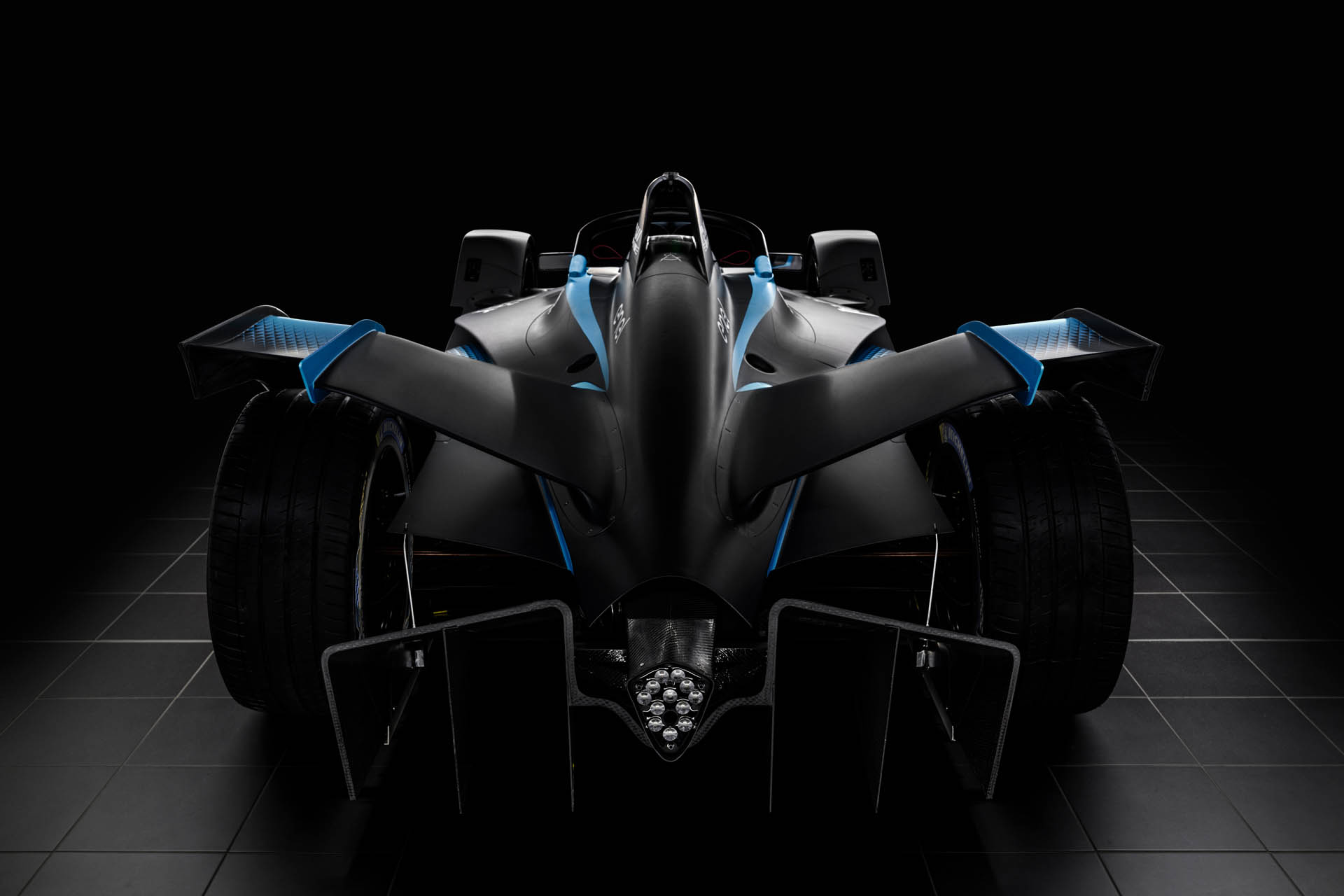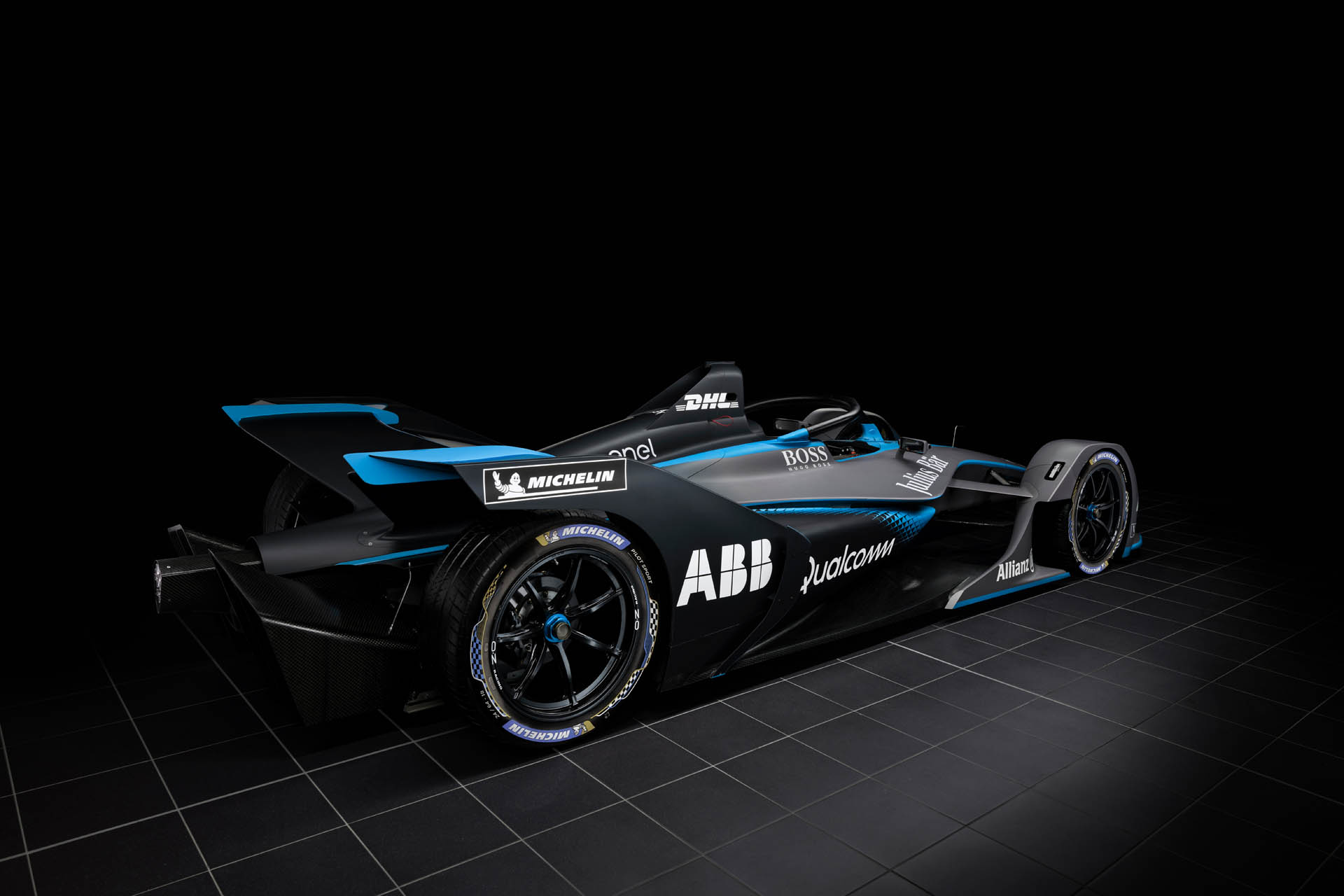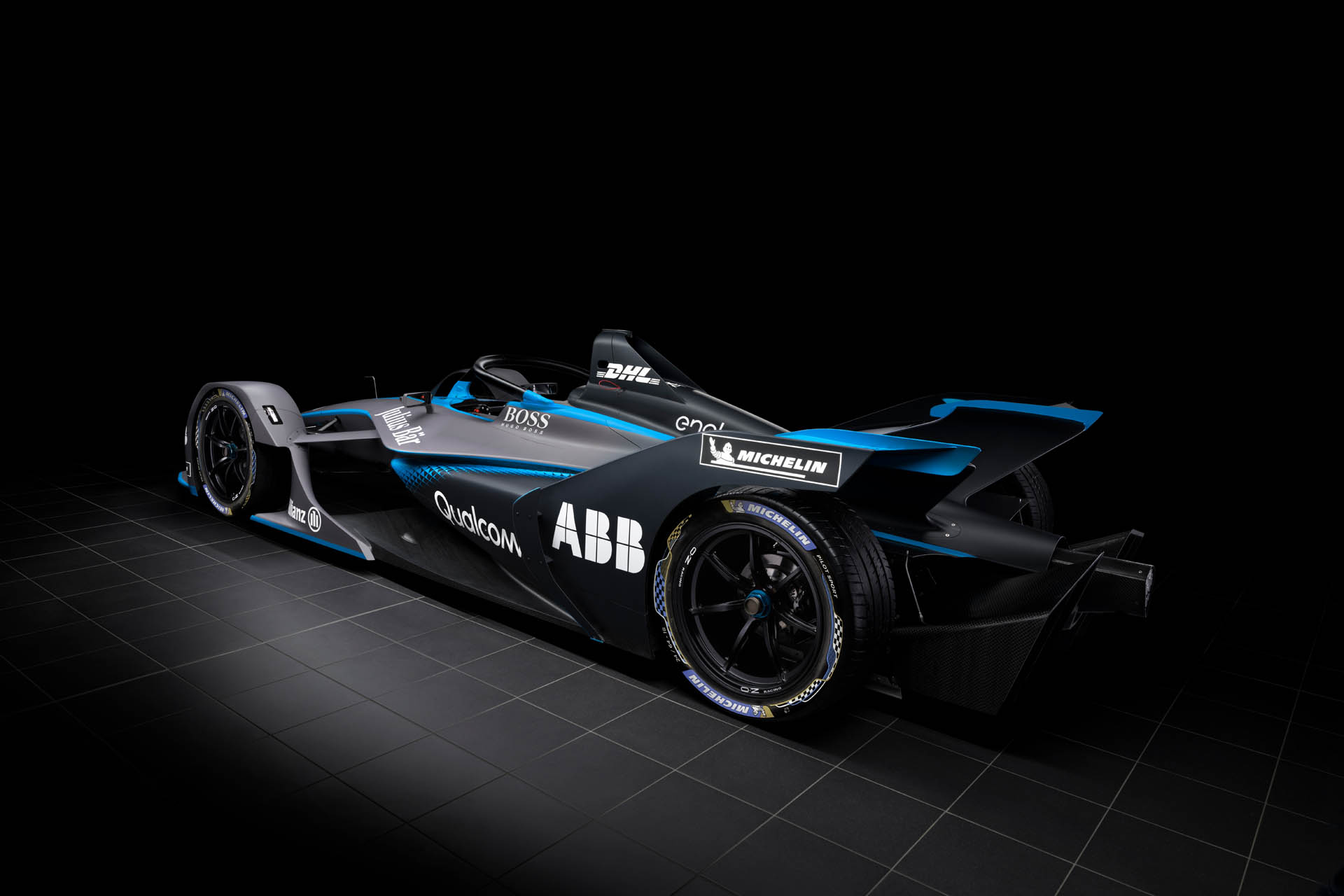A little over a month ago, Formula E revealed the first computerized images of its next-generation electric racer. Now it’s unveiled the new chassis at the Geneva Motor Show, representing an impressive leap over the car it’s set to replace.
Where the current car looks pretty much like any other formula single-seater, there’s no mistaking the new one. It boasts a futuristic design and aggressive aero package, with the halo cockpit safety device incorporated right from the drawing board – and in turn incorporating a strip of LEDs that will let fans follow various metrics being employed by each team and driver.
“This is the first time I’ve seen the complete car in the flesh and it’s even more sleek and spectacular up close. If you were to draw a racing car from scratch and base it purely on its looks, you’d come up with just this design,” said series chief Alejandro Agag. “This model visually differentiates Formula E from any other single-seater in motorsport today. When people see this car they will say it’s Formula E, it’s the future.”
Even more impressive, though, is what sits underneath. In just four years, battery technology has advanced to such a degree that the new car not only generates more power than the old one, but can travel twice the distance. That means the mid-race car swaps that have dominated team strategy will be a thing of the past.
“It’s incredible to see the progress made in just four years – to double the range of the car and increase the power output is a fantastic achievement,” said FIA president Jean Todt. Or as his technical deputy Gilles Simon put it, “To make some something faster with double the efficiency was a great challenge, and I think it’s going to be very spectacular when it takes to the track in season five.”
At 5,160 millimeters (203 inches) long and 1,050 mm (41”) tall, the Gen2 chassis stretches a bit longer and sits slightly taller than a modern Formula One racer, but rides on a shorter wheelbase and a narrower track. With a battery pack weighing 385 kg (850 pounds), it’s heavier than an F1 car at 900 kg (1984 lbs).
Nor is it anywhere near as powerful: the powertrain can deliver up to 250 kW (equivalent to 335 horsepower), but will run at 200 kW (270 hp) during races. It’ll be capable of accelerating from 0 to 62 miles per hour (100 km/h) in 2.8 seconds, reaching a top speed of 174 mph (280 km/h).
Michelin designed new tires that are grippier yet deliver lower rolling resistance, and stopping power is furnished by Brembo.
The new chassis is slated to be deployed starting with the fifth season, which will follow the current (fourth) iteration of the series currently underway.



